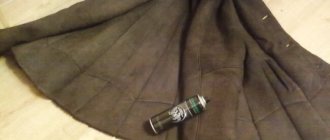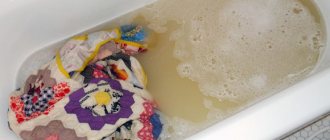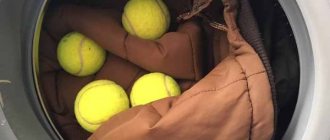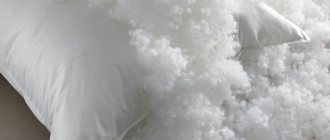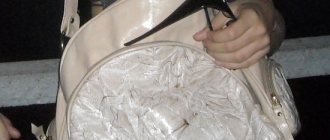Organza curtains are so popular today that they are found in almost every family. And this is no coincidence: the fabric is produced in a huge assortment. It comes in different colors, with patterns, etching, perforation, embroidery... Organza looks very attractive, and is quite affordable in price. This material does not require frequent washing, but you cannot do without it at all. How should you wash organza curtains to extend their service life? There are many nuances here, but compliance with them guarantees an excellent result.
How to wash by hand correctly
Before planning to hand wash, you should prepare your organza item. Clean the material from dust. Depending on the degree of contamination, washing is carried out in several stages.
Soak
Some of the dirt will be removed by pre-soaking. It is advisable to rinse the products under running water before soaking. White organza items are kept in a solution of soda or powder for 12 hours. You can add a little ammonia solution to the water. Remove the clothes from the solution and allow the water to drain.
Rinsing
If there is little dirt on the fabric, then you should rinse the items only in water. It is better to use soft water. If its hardness is high, then it is better to use rain or snow for rinsing.
Wash
How to wash organza products:
- Pour water at a temperature of 40 degrees into the container.
- Pour or pour in neutral detergent. Half a tablespoon is enough for a volume of 5 liters.
- The products are immersed in a soap solution and kept for 2-3 hours.
- It is necessary to wash gently, without sudden movements.
See also
Instructions for use of Laska washing gel, how to use
At the end of washing, transfer the item to a basin with slightly warmed water, rinsing thoroughly.
You will have to change the water several times until there are no traces of detergent left on the fabric.
Using Vinegar
After rinsing in warm water, the organza is immersed in cool water. A few drops of acetic acid are also added there. This way the material will retain its original shine.
Hands
Washing organza curtains is not difficult. Thanks to the structure of the material, all contaminants are easily removed; no effort is required to remove stains.
How to wash curtains by hand:
- Colored or white curtains are soaked in washing powder for delicate fabrics. It is better to use liquid detergent; it is easier to rinse and will not leave white streaks on the curtains.
- Kitchen curtains are pre-soaked in dishwashing detergent. It softens fat well, does not harm delicate material and dissolves soot.
- After this, the curtains must be placed in a soda-salt solution. Water temperature - 40 degrees. Soaking lasts 1 hour.
- After finishing soaking, clean in the same solution. How to wash organza: you cannot rub the fabric against each other; twisting is contraindicated. Remember how you wash wool by hand - gently squeezing it with your hands. In the same way, clean dirt and dust from organza.
- Rinse several times. Rinse the soap suds well.
If the fabric is light, it can be bleached. Folk remedies are especially popular.
How to properly wash in a washing machine
Thin artificial fabric is not afraid of machine washing. You just need to choose the right washing mode and water temperature.
In a mesh bag
To prevent curtains or clothes made of transparent fabric from tearing or stretching, they are placed in a specially sewn bag. Its length corresponds to the length of organza products. Having placed the clothes inside, the ends are tied to the cover. Wash at a low temperature of 40-50 degrees. After the procedure, the edges of things will be smooth, without elongated ends. They can be immediately hung to dry.
With pre-soaking
Organza items should be soaked before washing if they are heavily soiled. But the procedure should not take much time. Light and transparent items should be immersed in warm water, using a minimum of powder.
After removing stains
If grease stains or old yellowing are visible on the fabric, you should first remove the dirt and then wash it. Remove stains from the edges to the middle. Before using the chosen product, you should try how organza will react to a particular stain remover. It is best to use mildly aggressive agents.
Before bleaching
Load fabric items into the machine, setting it to “Delicate wash”. The water temperature in the machine should heat up to 30-35 degrees. You shouldn’t spin it, but you should rinse it several times. It is better to bleach items that have turned gray from frequent washing later using popular folk remedies.
How to wash tulle in a washing machine
To begin, carefully remove the tulle curtains from their fastenings. It is better to do this work together, since your task is to leave as little dust as possible in the room. So, one person removes the tulle, the second carefully takes it below. After this, you need to go out into the yard and shake off the accumulated dust from the curtains.
Before placing the tulle in the washing machine drum, carefully inspect the curtains. Perhaps the delicate fabric is so dirty that it would be a good idea to soak it. There is no need to be afraid of this procedure; tulle tolerates soaking well. Place it in a basin or bathtub with warm water. After some time, you will be able to replace the dirty water with fresh water, and at the same time you will see how much dirt your tulle managed to collect during the last period of use.
Recommendations for machine washing:
- Place the tulle in the washing machine in a special bag used for delicate washing. In the absence of a bag, you can use an ordinary white old pillowcase.
- When putting tulle in a bag, make sure that it is folded neatly, otherwise you will have to deal with wrinkles and folds in the fabric for a long time.
- The washing temperature should be set depending on the type of fabric, remember that it should not exceed 40 degrees.
- When spinning, the material may become frayed, so we set the minimum number of revolutions, 400 or 500.
- After setting the delicate wash program, turn on the machine.
- Tulle should be machine washed using a mild detergent.
Modern manufacturers produce tulle made from different materials; before washing these fabrics, you will have to study some of the nuances regarding their use. They will allow you to effectively wash tulle curtains without damaging the delicate structure of the fabric.
At what temperature is tulle washed?
- Nylon is washed at 30 degrees.
- Blended fabric, which includes cotton and polyester, will require water at 40-60 degrees.
- Organza tulle is washed at a temperature not exceeding 30 degrees.
- Chiffon needs to be washed at 30 degrees.
- Kisey is washed at 30 degrees.
The most durable, unpretentious fabrics are polyester and nylon. The maximum water temperature when washing polyester is 60 degrees. The use of bleach should be avoided when washing nylon and polyester. As for nylon, it is important to prevent premature yellowing of this material; this undesirable phenomenon occurs when the water temperature exceeds 30 degrees. Nylon tulle washes perfectly, if you use a low spin, all you have to do is remove the curtains from the machine and fasten them to the curtain rods.
Mixed fabric cannot be washed properly at such a low water temperature; set the program to 60 degrees, and the tulle will delight you with its pristine whiteness. Organza, veil, muslin will require the installation of a delicate program. Kisey generally tolerates machine washing very well, but do not forget to place it in a special bag. Organza and muslin are not wrung out or twisted, so as not to spoil the material. The veil can be wrung out at low speeds.
If you don't want to machine wash organza tulle, this lightweight, delicate fabric takes up little space and can easily be washed by hand using a mild detergent. There is no need to rub organza intensively if the contamination is minor; it can be easily washed off with light movements of your hands. Thin chiffon is washed in the same way; the temperature for washing these fabrics should not exceed 30 degrees.
How to bleach fabric
Over time, light and white organza items lose their shine and brightness of color. You can bleach items made from thin and transparent fabrics using store-bought bleaches. But you should choose those whose composition does not contain aggressive substances. It’s easy to spoil a thing, because threads of synthetic material can melt from the action of chlorine-containing products. It is better to turn to traditional methods of whitening.
Zelenka
Brilliant green solution has long been used for whitening. You must first dilute 10 drops of an alcohol solution in a glass of warm water. After complete dissolution, pour the contents of the glass into a bowl of water, which is heated to 40-50 degrees. They put things made of organza there. The products are kept in the solution for 5-10 minutes, constantly turning over.
See also
Which washing class is better in terms of efficiency in washing machines?
Blue
Liquid blue is added to the water before bleaching. For 10 liters of water you need a cap of the product. The powder is first diluted in a small amount of water, only then added to the container. Immerse clothing or organza curtains and hold for 5-7 minutes. Then you need to transfer things to another basin with cool and clean water.
Starch
Organza will turn white after being in a solution of warm water and potato starch (250 grams). Bleaching is carried out after washing. After keeping it in the solution for 5-6 hours, take it out and hang it so that the excess water drains off.
Laundry soap
A bar of soap is rubbed and mixed in a basin with warm water. Then heat to a boil so that the soap dissolves. When the soap solution becomes warm, items are dipped into it to bleach. Leave it overnight, and in the morning you will have to wash and rinse synthetic products.
Ammonia
Ammonia solution is often used for bleaching. You need to pour a bottle of the product into a bucket of water, immerse curtains and clothes in it. After 7-8 hours, they take things out and hang them out to dry. Effectively whitens ammonia together with hydrogen peroxide. You need 2 peroxide per spoon of alcohol. The products are kept in the solution for half an hour.
Hydrogen peroxide
Hydrogen peroxide is used for bleaching when washing clothes in a machine. To do this, pour 20 ml of solution into a special compartment and turn on the delicate washing mode.
Baking soda
Baking soda removes gray and yellowness from fabric. Prepare a solution by pouring 100 grams of washing powder or detergent into warm water. You also need to add 2 tablespoons of soda there. Stir everything well until completely dissolved. Things are immersed so that the solution completely hides them. After 30 minutes, rinse in clean water.
Potassium permangantsovka
Products made from artificial material are rubbed with laundry soap before immersion in a pinkish solution. You need to keep the organza for an hour. Then comes rinsing and drying the fabric.
Lemon acid
Citric acid has a whitening effect. But only items without designs or embroidery should be soaked in the solution. After rubbing the surface of the fabric with laundry soap, place the products in warm water. Add 2-3 sachets of citric acid there. Half an hour is enough for whitening.
Cooking curtains
Large items made of natural organza can be bleached in the usual way - by boiling. To do this, you need a container with water and washing powder. The products are rubbed with laundry soap and immersed in a soap solution. Place on the fire, bringing to a boil. The temperature is reduced by leaving it on the stove for 50-60 minutes. Then it remains to rinse in warm and cool water.
See also
TOP 18 remedies for how and how to remove sea buckthorn oil from clothes at home
The nuances of whitening
If not just individual areas of the fabric have been damaged by dust and dirt, but the entire tulle has turned yellow or gray, bleaching is necessary. It is logical that, by analogy with stain remover, using universal bleach is too risky. It is better to turn to folk remedies again. Four “bleaches” are considered safe and effective in the fight against grayness and yellowness:
- salt;
- soda;
- peroxide;
- brilliant green
Some housewives recommend bleaching gray organza by soaking it in low-fat kefir or natural yogurt for 24 hours.
But to achieve an impeccable result, you must follow several rules. First, set the washing temperature to 30-40 degrees and gently rinse the tulle in soapy water. Secondly, in a separate container, dilute water with soda, salt, peroxide or 10-20 drops of brilliant green. Third, let the fabric soak thoroughly in the bleach, monitoring the soaking time for the effect it produces. Remember that if you overexpose the curtain, you can overdo it and ruin its appearance. Fourth, rinse the item thoroughly under running cool water.
You can wash organza either by hand or in a washing machine. The main thing is to follow the above rules and advice in any case.
Interesting:
- Washing embroidery
- Washing powder for newborns - which one is better?
- Washing knitted items in the washing machine
- Reviews of children's washing powders
- Washing filament curtains in a washing machine
- Washing bath curtains in a washing machine
Reader comments
- Share your opinion - leave a comment
How to remove stains and yellowness
If you cannot remove stains from the material, then you should pay attention to household chemicals. “Vanish” will cope perfectly with the yellowness. Before removing stains, you should check how the fabric will react to the stain remover.
The instructions for the product tell you what stains and fabrics the substance is suitable for. Therefore, it is necessary to carefully read the manufacturer's recommendations.
Sometimes darkened curtains will turn snow-white after soaking in salt water and washing with powder.
How to dry and iron correctly
After washing and rinsing, there is no need to hang things on a line. They are hung on the ledge so that the water flows into the container. Organza cannot be dried in the cold.
Light fabric should be ironed if wrinkles occur. And so a slightly dried curtain can be immediately hung on the cornice. If you need to iron a skirt or blouse, it is better to heat the iron slightly and run it from the wrong side. It is advisable to use a steam generator when ironing. Iron the organza through thick fabric. This way the material will not be damaged and will acquire the necessary smoothness.
How to wash organza curtains
Organza curtains are available in almost every home. They are tidied up as they become dirty. Before washing, you need to shake out the dust from the curtains. It is better to soak contaminated items and then wash them in an automatic washing machine. The water should be warm, 30-40 degrees. The powder should not produce a lot of foam. Spin is used rarely and only at minimum speed. It is advised to wash in a special bag, stretching the curtains along the entire length. This way they will keep the sides even and will not sag.
It is necessary to rinse especially carefully. Organza absorbs foam from detergent well. When choosing a powder, you should pay attention to this.
Handwash
Not everyone trusts the capabilities of modern technology and prefers the manual process of caring for delicate fabrics. How to wash organza tulle without a machine, what you need to do to clean the curtains and maintain their original appearance. There are several simple rules that are recommended to be followed. The fabric is easy to wash, but powder alone will not be enough without preliminary preparation.
Soak
How to wash organza curtains by hand if there are stains on them and yellowness has appeared. The usual soaking comes to the rescue. Pour several glasses of salt and a little powder into the bath. The temperature should not exceed 30 degrees. The curtains can lie in this solution for several hours, after which they must be rinsed with plenty of cold water. Such preparatory steps will remove yellowness from white fabric.
How to wash kitchen linen with greasy stains and soot. You need to pour dishwashing detergent into the soaking water and add a little baking soda. They allow you to dissolve fat and get rid of sticky soot. The products should remain in the solution for several hours to make it easier to remove contamination. Before washing, curtains must be rinsed well.
Wash
To properly wash organza tulle by hand, you do not need to rub or twist it. Thin, delicate fabric cannot tolerate such roughness. Curtains are placed in water at a temperature of no more than forty degrees. The powder must first be dissolved in it so that its large particles do not adversely affect the fabric. In the manual process, as well as in the machine process, it is recommended to use gel.
The tulle has already been soaked, but to make it shiny, it is recommended to add a little vinegar to the water. In this solution, you need to wash the tulle with light squeezing movements, as if you were holding a fragile snowball in your hands, and not a piece of fabric.
Rinsing
If the machine does everything unnoticed, then when washing by hand you will have to go through all the stages yourself. The tulle is laid out in a basin and flows around it, during which time the bath is filled. The rinse water should be cool, but without sudden temperature changes. When the curtains flow around, they can be placed in the bathroom. It is necessary to rinse until the residue from the detergent is gone. If you add a little blue to the last water, the tulle will acquire its original appearance, as when purchased. Once the curtains have flowed around, they can be hung on the curtain rod.



